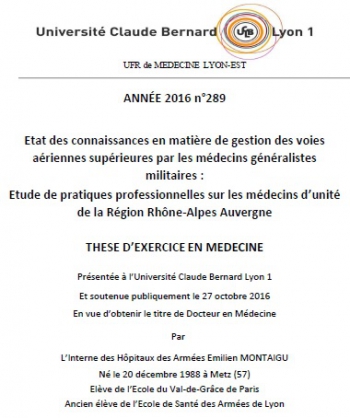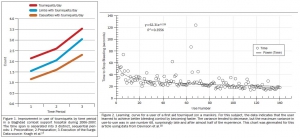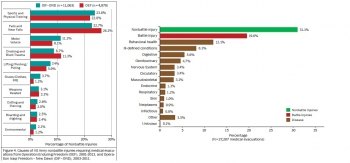11/11/2016
VAS:Connaissances des médecins d'unité
15 ans d'emploi du tourniquet: Que dire ?
Battlefield Tourniquets: Lessons Learned in Moving Current Care Toward Best Care in an Army Medical Department at War
Kragh JF Jr et Al. US Army Med Dep J. 2016 Apr-Sep;(2-16):29-36.
------------------------------
Un point d'étape qui insiste sans surprise sur l'apport d'une pose précoce d'un garrot. Précoce mais aussi rapide: 25 secondes sont nécessaires aux plus entraînés mais c'est 20 secondes de trop. Plus on s'entraîne et plus vite ET mieux on pose ce garrot.
------------------------------
Bleeding prevention and control by tourniquet use by out-of-hospital caregivers is a major breakthrough in military medicine of current wars. The present review documents developments in tourniquet practices since 2001 among the US military services for aid in improving doctrine, policy, and especially care in wars to come. Tourniquets are an adjunct for resuscitation in self-care and buddy aid and today are issued to all military service persons who deploy into a combat zone. In the US Army, virtually every Soldier is trained in first aid tourniquet use; since 2009 they are instructed early and often to use them early and often. Despite substantial knowledge gains among the services in tourniquet use and resulting improvements in casualty survival, current evidence shows persistent diffi culties in achieving best care with tourniquet use for individual trauma patients. Nevertheless, contemporary tourniquet use incorporates key lessons learned over the last 14 years of war that include: (1) tourniquet use reliably stops bleeding from limb wounds and prevents mortality in prehospital settings; and (2) brief tourniquet use appears to be safe. These 2 lessons have become so evident that civilian emergency medical systems have begun using them, albeit unevenly. Collection and interpretation of data of casualties with tourniquet use have showed that such intervention has lifesaving benefit through 2 mechanisms: control of both ongoing hemorrhage and shock severity. The next generation of interventions in bleeding control involves developing the skill sets, education, and standards of tourniquet users which may improve hemorrhage control in wars to come
| Tags : tourniquet
10/11/2016
Evasan: Surtout des blessés non en rapport avec la guerre
Surveillance of Disease and Nonbattle Injuries During US Army Operations in Afghanistan and Iraq.
Hauret KG et Al. US Army Med Dep J. 2016 Apr-Sep;(2-16):15-23.
Disease and nonbattle injury (DNBI) are the leading causes of morbidity during wars and military operations. However, adequate medical data were never before available to service public health centers to conduct DNBI surveillance during deployments. This article describes the process, results and lessons learned from centralized DNBI surveillance by the US Army Center for Health Promotion and Preventive Medicine, predecessor of the US Army Public Health Command, during operations in Afghanistan and Iraq (2001-2013).The surveillance relied primarily on medical evacuation records and in-theater hospitalization records. Medical evacuation rates (per 1,000 person-years) for DNBI were higher (Afghanistan: 56.7; Iraq: 40.2) than battle injury rates (Afghanistan: 12.0; Iraq: 7.7). In Afghanistan and Iraq, respectively, the leading diagnostic categories for medical evacuations were nonbattle injury (31% and 34%), battle injury (20% and 16%), and behavioral health (12% and 10%). Leading causes of medically evacuated nonbattle injuries were sports/physical training (22% and 24%), falls (23% and 26%) and military vehicle accidents (8% and 11%).
This surveillance demonstrated the feasibility, utility, and benefits of centralized DNBI surveillance during military operations.



